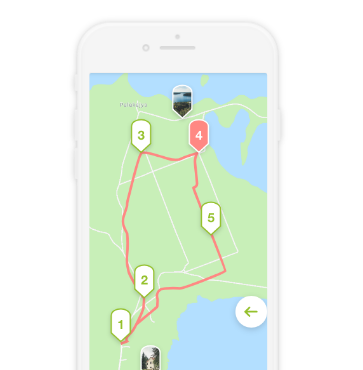Route: Vītiņi – Biksti – Zebrene – Dobele – Jelgava – Cena – Tērvete – Vilce – Mežotne – Bauska – Bārbele – Pasvalys – Šiauliai – Satrija – Papilė – Viekšniai – Mažeikiai
The Semigallian Route Segment highlights ancient values of the cultural and historical landscapes of Semigallians as well as signi cant natural heritage sites that were known to Semigallians living here centuries ago. Historical sources indicate that Semigallians were among the richest and most militant nations. Resistance battles and defence against the Crusaders was organised from hillforts. Silakalns, Mežotne, Tērvete, Dobe, Spārnu and Dobele hillforts in Latvia and Rekčiai and Ąžuolpamūšė retained their characteristic shape to this day. Šatrija was an important centre of neighbouring Samogitia.
On September 22, 1236, one of the biggest battles of the North Crusades – the Battle of Saulė – took place in Semigallia. In the present-day Latvia and Lithuania, it is celebrated as the Balts’ Unity Day. Horses were a crucial part of military expeditions; the hardy and courageous žemaitukai horses are seen grazing near Pakruojis Manor. You will discover stories about the Battle of Saulė, Semigallians and their kings and lands by visiting Tērvete Wooden Castle of 12th century, Bauska Castle, the Dobele Local History Museum, the Jelgava History and Art Museum of Ģederts Eliass, the Pasvalys Museum, the Mažeikiai Museum and the Šiauliai Aušros Museum.
The Pasvalys Museum tells about sinkholes and the life of people in the karst region. Glacial stones and their diversity in the Balts’ countries can be found in the extensive collection of stones by Antanas Stapulionis. Kamanos High Swamp and several hundred thousand years old Papilė outcrops are also related to the Ice Age. The fabled Lake Zebrus, Zemgale’s biggest lake, and Ezerlūķi Hillfort with its surroundings are among the most mysterious places in Semigallia (Zemgale).
On the route, you will also see Lake Svēte and Elkus Hillock (Elkus kalns), Dobele Crafts House (Dobeles Amatu māja), Farm House “Caunītes”, the Bauska Museum, Bārbele Sulphur Spring, restored sanctuary in Baltic God Park – Museum, the Herb Plant Farm of Jadvyga Balvočiūtė, Santekliai Sacred Pine Forest and the Museum of S. Daukantas.





































.jpg)





Reviews